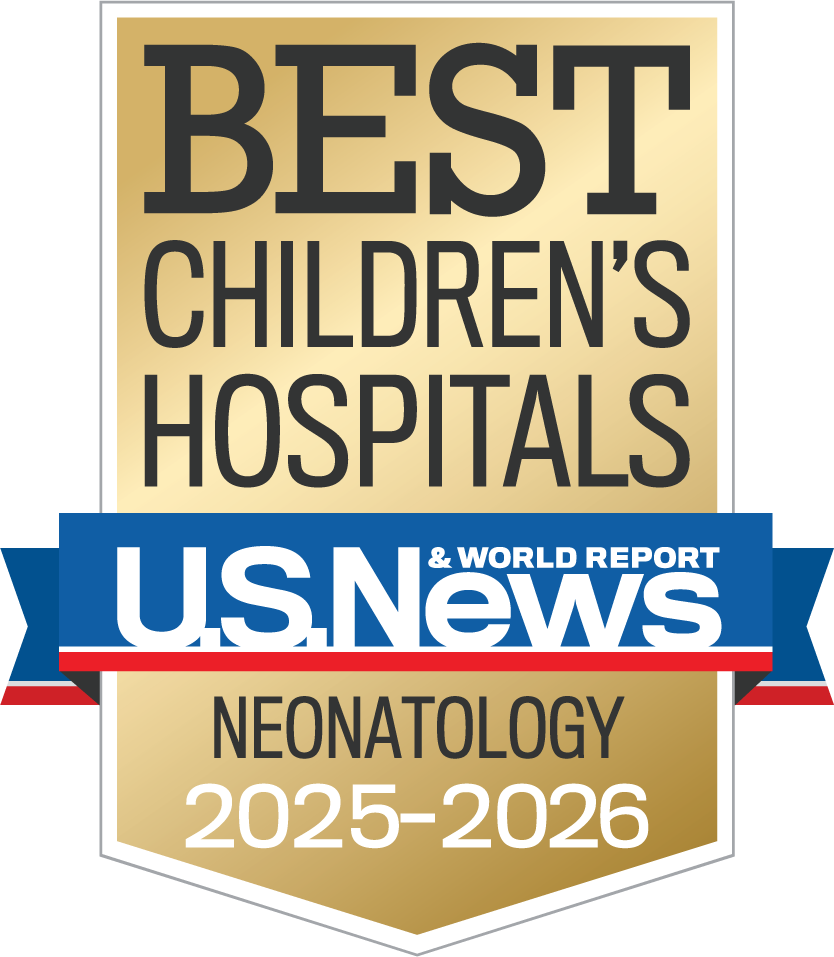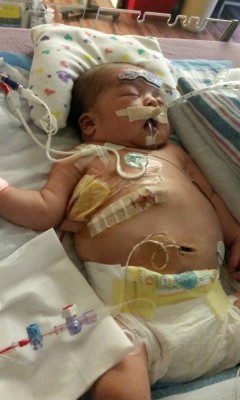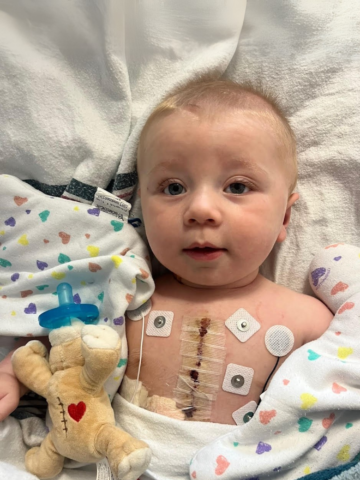Alicia was born at full term, beautiful with 10 fingers, 10 toes and a life-threatening defect buried inside her tiny chest.
She had a congenital diaphragmatic hernia (CDH), a condition where a hole in the diaphragm allows abdominal organs to move into the chest. And this case was especially serious.
Though less common, hernias on the body’s right side are more dangerous because the liver, a larger organ, can move into the chest cavity, impairing lung development, impeding blood vessel functionality and ultimately causing pulmonary hypertension, says Dr. Mustafa Kabeer, Alicia’s surgeon at CHOC.
Just 20 percent of CDH cases are right-sided, and about 40-50 percent of babies nationwide survive their treatment; conversely, more common left-sided hernias yield about an 80-90 percent survival rate, Dr. Kabeer says.
Prenatal meetings remain key
After the diagnosis, Alicia’s mother Marlen began meeting with Dr. Kabeer and other specialists to prepare for her baby’s birth and treatment afterward.
“It helped because we had the prenatal meeting,” Dr. Kabeer says. “That way, parents can connect a face to a particular job in the care of their baby. They are educated and know what to expect during treatment.”
Just hours after her birth, Alicia’s condition began dramatically deteriorating. A transfer to CHOC was necessary, and Marlen and her husband were warned that Alicia would not likely survive the 2-mile ambulance ride.
But she made it, and quickly began treatment under a life-saving device called extracorporeal membrane oxygenation (ECMO) to help her compromised lungs. First pioneered at CHOC about 40 years ago, ECMO is a heart and lung bypass machine that can be used to rest a failing heart or lungs, providing complete support until the organs recover.
About a week later, Dr. Kabeer performed the procedure to repair the diaphragmatic hernia, all while Alicia remained on ECMO with substantially high risks of uncontrollable bleeding due to the blood thinners needed while on the treatment.
Alicia sailed through the surgery with little bleeding, but within the next day or so, Dr. Kabeer needed to perform two separate procedures to relieve pressure building inside her abdomen that compromised blood flow to the lower half of her body.
Two weeks old and five surgeries
Shortly after this surgery, Alicia began to bleed. During the next four days, she had ongoing bleeding and during the fourth day, lost about 1,500 mL of blood, or about six times her normal blood volume. Hospital staff kept her stable, and Alicia was taken off of ECMO. Two days later, Dr. Kabeer performed a final surgery to close her abdomen, which had been left open all of this time to decrease pressure.
“All of those surgeries were very high-risk surgeries,” Marlen says. “There was a very high chance she wouldn’t make it, but she did perfectly.”
Throughout the entire process, Dr. Kabeer communicated with Marlen and Omar about the risks of the surgeries. And like every other time Alicia’s parents were cautioned about her survival, the tiny infant fought back.
“Even though it’s a difficult subject, and a complicated, emotional and anxiety-provoking issue, we want parents to understand the problem their child is facing and that we’re trying to help them and their baby overcome it,” Dr. Kabeer says. “That connection and rapport are very important and it all stems from honesty.”
“It involved a very transparent discussion,” Dr. Kabeer said. “I laid out for them all of the issues and all of my concerns, and made them see that we’re going to do our best and face these challenges together. I want to give parents reassurance and security to know that not only are they in a good place, but they’re with staff who are well trained.”
Coordinated care in the Surgical NICU
Between her five surgeries and afterward, Alicia was closely monitored inside CHOC’s Surgical Neonatal Intensive Care Unit, a special part of the hospital’s main NICU dedicated to the care of babies who need surgery.
In the unit, the team cares for patients jointly, discussing the cases of children like Alicia as a group and forming a treatment plan that often calls for the expertise of other specialties at CHOC.
After several months in the Surgical NICU, Alicia went home with her family. Today, she is a happy, charismatic four-year-old.

“Alicia’s case reinforces the fact that babies are extremely resilient,” Dr. Kabeer says. “It’s amazing that she tolerated all of this. Every patient is unique and this is a perfect example of why we should give them every chance possible.”
Get more expert health advice delivered to your inbox monthly by subscribing to the KidsHealth newsletter here.

Learn more about CHOC’s Neonatology Services
CHOC Hospital was named one of the nation’s best children’s hospitals by U.S. News & World Report in its 2025-26 Best Children’s Hospitals rankings and ranked in the neonatology specialty.







